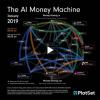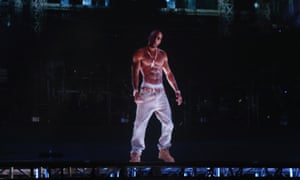
Breaking News
We Americans Need to Dig Deep into Historical Perspective
 A timeless clip of Michael Burry explaining how he used credit default swaps...
A timeless clip of Michael Burry explaining how he used credit default swaps...
 The next financial crisis won't start in a bank lobby. It's already brewing in the market
The next financial crisis won't start in a bank lobby. It's already brewing in the market
Top Tech News
 This tiny dev board is packed with features for ambitious makers
This tiny dev board is packed with features for ambitious makers
 Scientists Discover Gel to Regrow Tooth Enamel
Scientists Discover Gel to Regrow Tooth Enamel
 Vitamin C and Dandelion Root Killing Cancer Cells -- as Former CDC Director Calls for COVID-19...
Vitamin C and Dandelion Root Killing Cancer Cells -- as Former CDC Director Calls for COVID-19...
 Galactic Brain: US firm plans space-based data centers, power grid to challenge China
Galactic Brain: US firm plans space-based data centers, power grid to challenge China
 A microbial cleanup for glyphosate just earned a patent. Here's why that matters
A microbial cleanup for glyphosate just earned a patent. Here's why that matters
 Japan Breaks Internet Speed Record with 5 Million Times Faster Data Transfer
Japan Breaks Internet Speed Record with 5 Million Times Faster Data Transfer
 Advanced Propulsion Resources Part 1 of 2
Advanced Propulsion Resources Part 1 of 2
 PulsarFusion a forward-thinking UK aerospace company, is pushing the boundaries of space travel...
PulsarFusion a forward-thinking UK aerospace company, is pushing the boundaries of space travel...
 Dinky little laser box throws big-screen entertainment from inches away
Dinky little laser box throws big-screen entertainment from inches away
 'World's first' sodium-ion flashlight shines bright even at -40 ºF
'World's first' sodium-ion flashlight shines bright even at -40 ºF
In the age of deepfakes, could virtual actors put humans out of business?

In film and video games, we've already seen what's possible with 'digital humans'. Are we on the brink of the world's first totally virtual acting star?
When you're watching a modern blockbuster such as The Avengers, it's hard to escape the feeling that what you're seeing is almost entirely computer-generated imagery, from the effects to the sets to fantastical creatures. But if there's one thing you can rely on to be 100% real, it's the actors. We might have virtual pop stars like Hatsune Miku, but there has never been a world-famous virtual film star.
Even that link with corporeal reality, though, is no longer absolute. You may have already seen examples of what's possible: Peter Cushing (or his image) appearing in Rogue One: A Star Wars Story more than 20 years after his death, or Tupac Shakur performing from beyond the grave at Coachella in 2012. We've seen the terrifying potential of deepfakes – manipulated footage that could play a dangerous role in the fake news phenomenon. Jordan Peele's remarkable fake Obama video is a key example. Could technology soon make professional actors redundant?
Like most of the examples above, the virtual Tupac is a digital human, and was produced by special effects company Digital Domain. Such technology is becoming more and more advanced. Darren Hendler, the company's digital human group director, explains that it is in effect a "digital prosthetic" – like a suit that a real human has to wear.
"The most important thing in creating any sort of digital human is getting that performance. Somebody needs to be behind it," he explains. "There is generally [someone] playing the part of the deceased person. Somebody that's going to really study their movements, facial tics, their body motions."
'The most important thing in creating a digital human is getting that performance' ... digital Tupac Shakur at Coachella in 2012. Photograph: Christopher Polk/Getty Images
Digital and digitally altered humans are commonplace in modern cinema. Recent examples include de-aging actors such as Samuel L Jackson in Captain Marvel, and Sean Young's image in Blade Runner 2049. And you can almost guarantee the use of digital humans in any modern story-led video game: motion-captured actors give their characters lifelike movement and facial expressions.

 The AI money machine!
The AI money machine!


